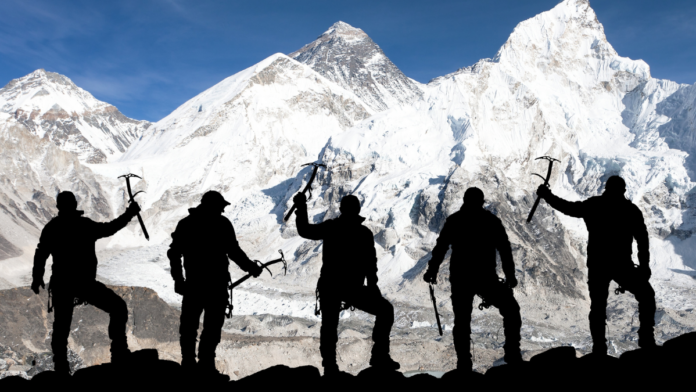Nepal has officially banned solo expeditions to all mountains above 8,000 metres, including Mount Everest, by amending its mountaineering regulations, according to the government publication Nepal Gazette.
The Sixth Amendment to the mountaineering regulation was released late Tuesday evening. As per the new regulations, every two members of a mountaineering team must be accompanied by at least one altitude worker or mountain guide. This rule applies to all mountains above 8,000 metres, including Mount Everest.
The recently introduced provision states, “When climbing a mountain peak with an altitude of more than 8,000 metres, every two members of the mountaineering team must be accompanied by at least one altitude worker or mountain guide, and when climbing other mountains, the mountaineering team must take at least one mountain guide with them.”
This new provision will be applicable to alpine-style or expedition-style climbers as well. The lately adopted changes also has formally publicised the hike in royalty fee for the foreign climbers attempting to summit Mount Everest from the standard south route in spring to $15,000 per person.
The spring expedition, which sees a high influx of climbers in the Himalayan Nation from March to May, previously cost $11,000. The new regulation also increased the climbing royalty for the autumn season, which runs from September to November, to $7,500 from the existing $5,500.
Similarly, the Winter expedition, which runs from December to February, and the monsoon expedition, which runs from June to August, have been revised to $3,750 from the existing $2,750. The updated provision also incorporates the revised fee for other mountaineers. The spring expedition’s royalty has increased nearly twofold, from $1,800 to $3,000. The autumn fee now stands at $1,500 from the existing $900, while the winter and monsoon expedition has become dearer, having been revised from $450 to $750.
Regarding Nepali climbers, the royalty for the normal routes in the spring season has doubled from NPR 75,000 to 150,000. Nepal, in the year 2015 had revised the royalty fee by switching from a group-based system to a uniform fee of $11,000 per climber for Everest’s spring season via the normal route. In regards to the slew of changes that the Himalayan Nation has adopted lately, the family members of the climbers, guides and high-altitude base camp workers are also banned from the base camp.
In case of prior approval from the tourism department, the family members can be exempted from a stay at the base camp that does not exceed two days, the new regulation states. In addition, the latest regulatory measures have also assigned high-altitude guides to “self-declare” their clients’ successful summit of the peak. To prove the successful summit, the expedition organizers and liaison officers have been mandated to submit an original photo clearly showing the climber’s face.
To establish the authenticity of the successful summit, the photo must bear mountain ranges in the background, which is the new eligibility criteria for receiving an Everest Climb certificate. Apart from the climbers, the revised regulatory provision has increased daily allowance for liaison officers, daily wages of high altitude guides, and base camp workers paid by climbers.
Liaison officers’ daily wages have increased from ₹500 to ₹1,600. Sirdars (lead Sherpas) will now receive ₹1,500 daily, up from ₹500. Similarly, wages of high-altitude guides have jumped from ₹350 to ₹1,200 per day. Base camp workers’ daily wages have increased from ₹300 to ₹1,000.
To curb pollution in high mountains, the climbers from this year’s spring mandatorily have to bring their waste, including human waste, back to base camp for proper disposal. Climbers are required to carry biodegradable bags for waste collection in the upper reaches. Nearly 8,900 people have summited the world’s highest peak from Nepal’s side since 1953. The new provisions will come into effect on September 1, 2025.



